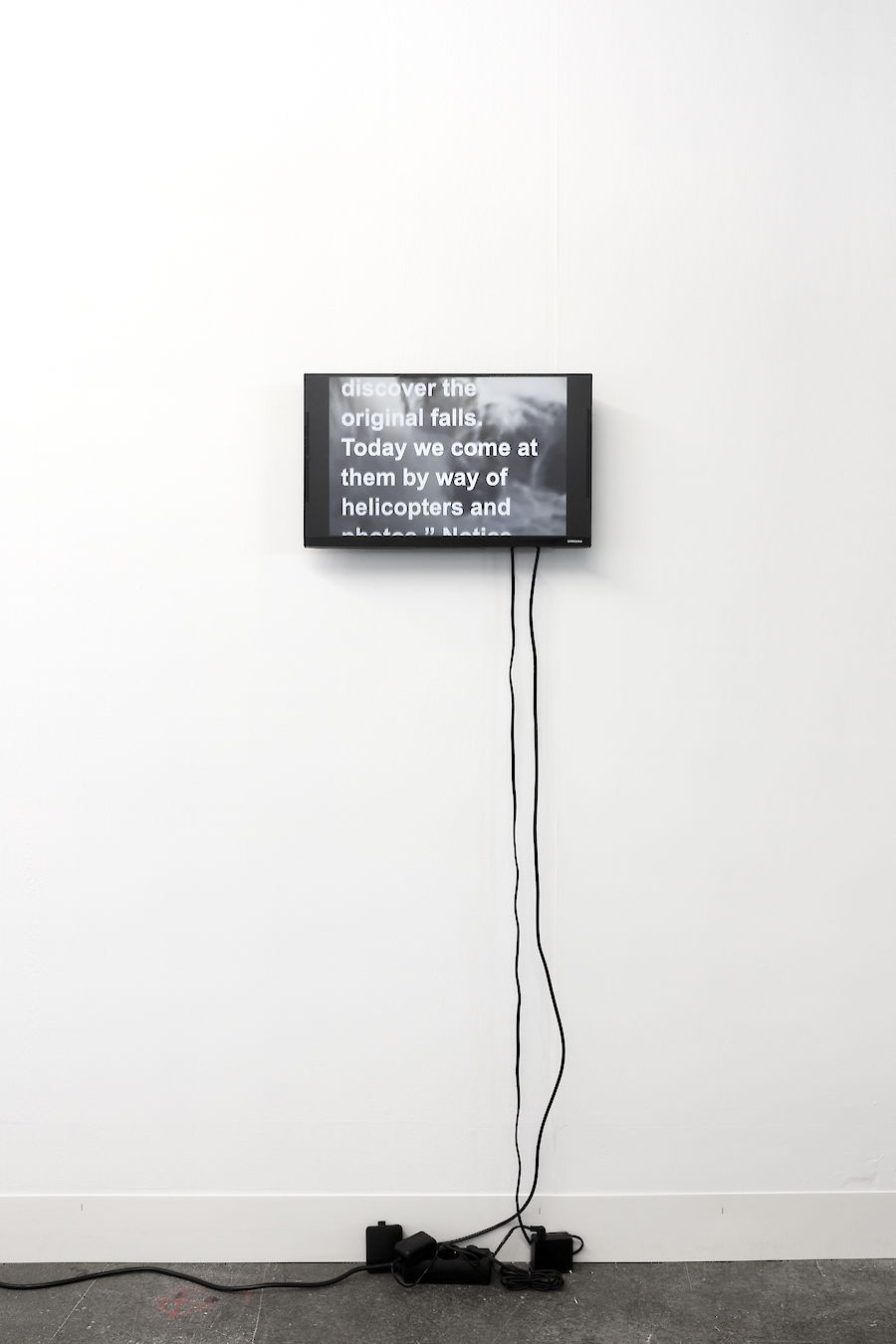
This website was co-designed and built with Laurel Schwulst in 2022.
Inspired by the work of Olia Lialina and the ethos of digital folklore, this site joins in Lialina's radical vision of constructing a website as a personal home on the web: "Don't see making your own web page as nostalgia, don't participate in creating the netstalgia trend. What you make is a statement, an act of emancipation. You make it to continue a 25-year-old tradition of liberation." And now, a 30-some-years-old tradition.
When this website is viewed on a desktop computer, it appears with waterfalls on either side of the text:

These waterfall videos are excerpts appropriated from a 24-7 live-stream of a mountain vista that sweeps periodically to a popular scenic destination, the Xiao Wulai Waterfall.
This same video appears in the work, Antipodes (2022) and influenced the work, Scroll Figure #4 (2022), wherein I pose the waterfall as a kind of natural cinema.
“The water does not fall regularly. It organizes itself vertically in successive waves, like breakers, overlapping on a horizontal beach. The parabolic river falls are like the gigantic breast of an animal, a horse’s breast illuminated with all the colors of the mist. The water takes so long to fall that, by an illusion akin to that of silent cinema, the mass of water seems rather to scale the rocks than plunge into the abyss. And, since the emotion of an inexpressible, the whole work of the imagination here consists in the abduction of the natural spectacle. And so, by breaking up the movement artificially, the cataract seems like a natural catastrophe in slow motion. With a little more imagination, it becomes as still as a glacier.”

Text from the work, Scroll Figure #4, 2022:
It matters the approach towards the waterfall. Is it from near the base, where you are sprayed by its mist as you gaze up at it? Or is it a view from above where the waterline edges against a ridge? These are partial glimpses. The procession around viewing the waterfall is what Jean Baudillard describes as “catwalks leading,” trails “like cinematic arms,” or “optical tentacles approaching the liquid chaos.” [i] Viewing moves you to ascend or descend around the natural feature, assembling these partial glimpses in continuous survey by foot.
What is striking about viewing––and the construction of these “cinematic arms” around cataracts like Iguazu Falls––is how regarding sublime landscape is a process over centuries. Baudrillard laments, “Iguazu. We shall never discover the original falls. Today we come at them by way of helicopters and photos.” [ii] Notice the human trails built around the banks of the water, from footpaths and animal trails that have marked themselves around these scenes or steel structures that overhang a slick glass skywalk for a dramatic perspective, suspended above water as by Xiao Wulai Waterfall. These tracks and built structures mark the ways we have gathered around such natural landmarks over centuries, and how our more recent paths iterate and circle around seeing.
At various angles, a plunge of water inspires vertigo. Near its base, it feels monumental, a column of liquid. “The water takes so long to fall that, by an illusion akin to that of silent cinema,” Baudrillard observes, “the mass of water seems rather to scale the rocks than plunge into the abyss. And, since the emotion of an inexpressible, the whole work of the imagination here consists in the abduction of the natural spectacle. And so, by breaking up the movement artificially, the cataract seems like a natural catastrophe in slow motion. With a little more imagination, it becomes as still as a glacier.” [iii] A continuous stream cascades. Fuller on some days, slower on others, a waterfall's essential image remains, but its liquid particles are ever-changing and renewing. A prehistoric cinema. There is a lot of meaning you can project onto such enigmas of landscape.
Recreation and rest has existed alongside these scenes and poems written around such visits. As one such admirer, Japanese poet Basho visited Urami Falls on an early summer day sometime in the seventeenth century. Tucking himself behind the curtain of water, he composed a poem: “Silent a while in a cave,/ I watched a waterfall,/ For the first of/ The summer observances.” [iv] Through a secret path and in close encounter with the wall of water, being folded inside of the falls itself exhilarates. It is in such scenes of the sublime that revelation comes to bear.
i. Baudrillard, Jean. Cool Memories II. Translated by Chris Turner. Polity Press, 1996. 10.
ii. Ibid.
iii. Baudrillard. 10-11.
iv. Basho. The Narrow Road To The Deep North and Other Travel Sketches. Translated by Nobuyuki Yuasa. Penguin, 1966. 101.